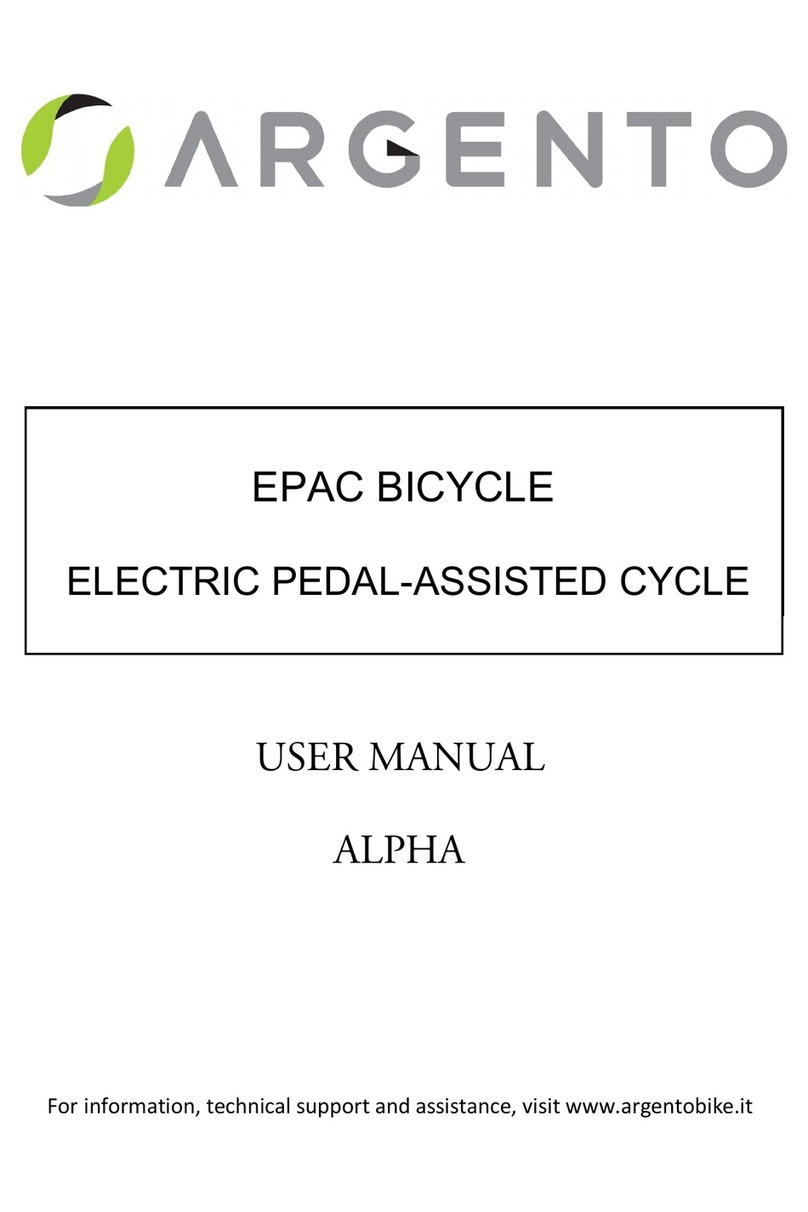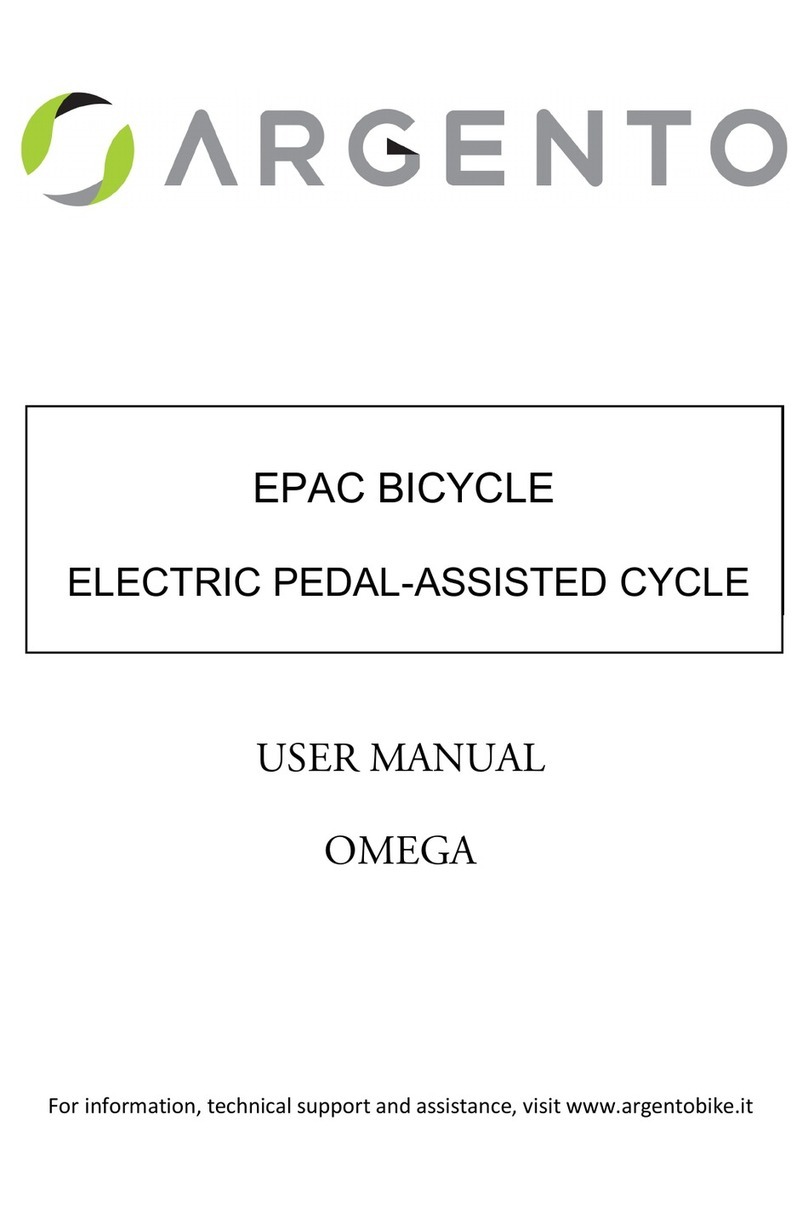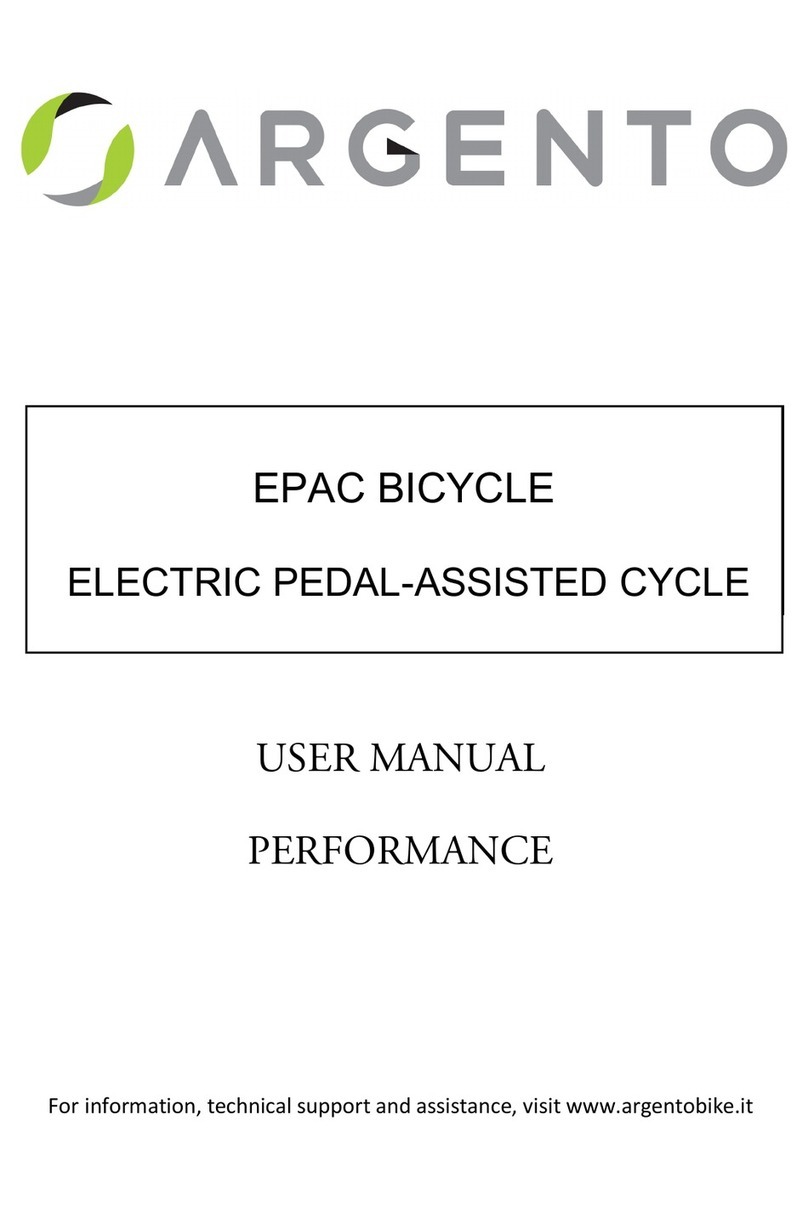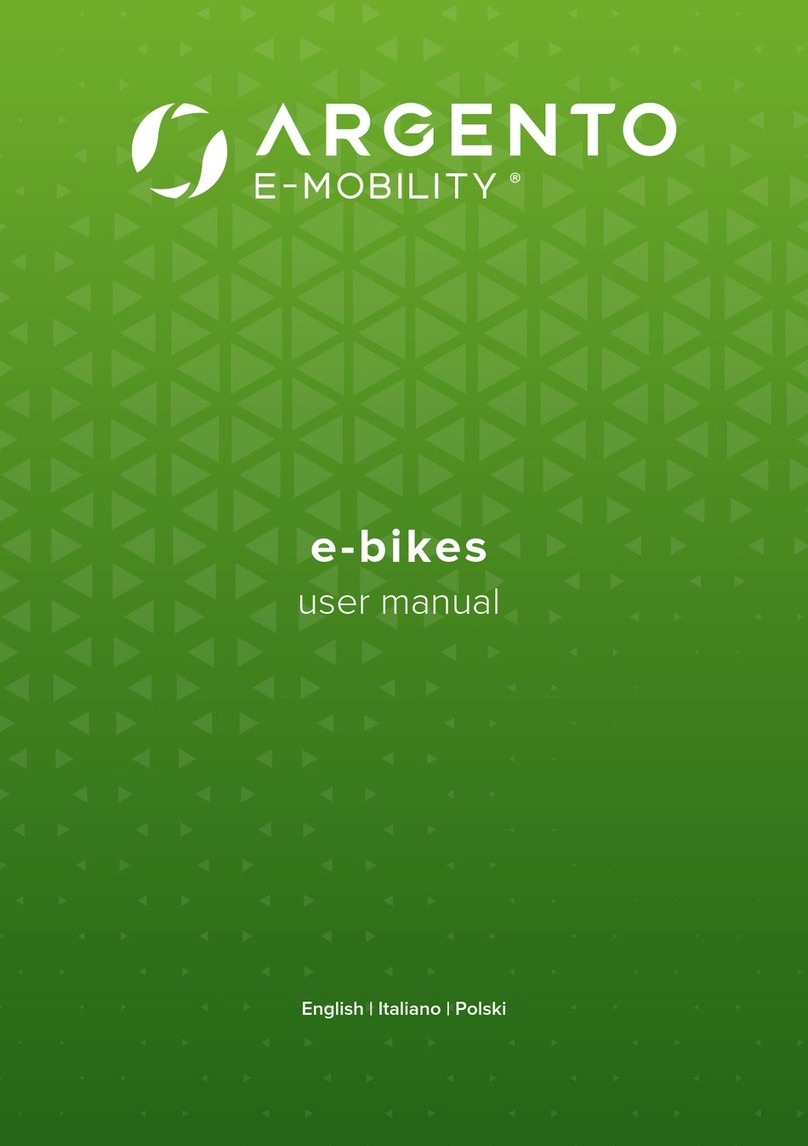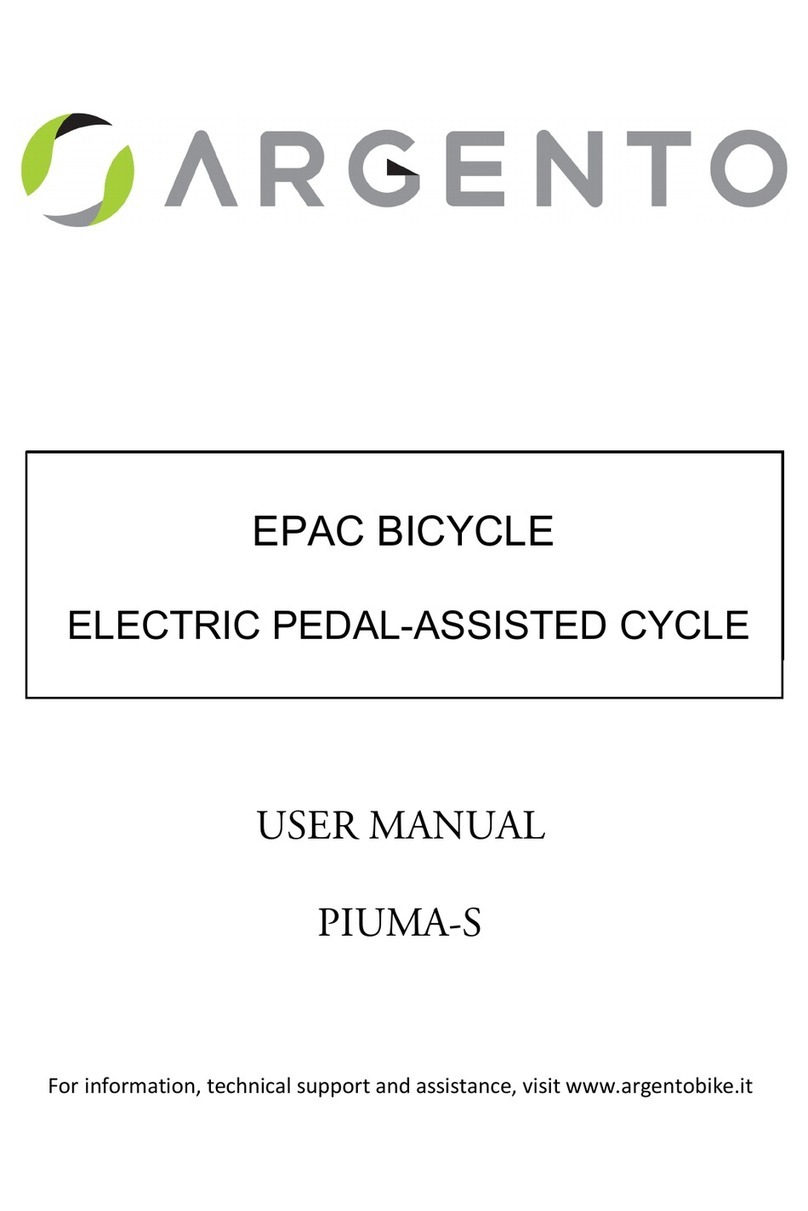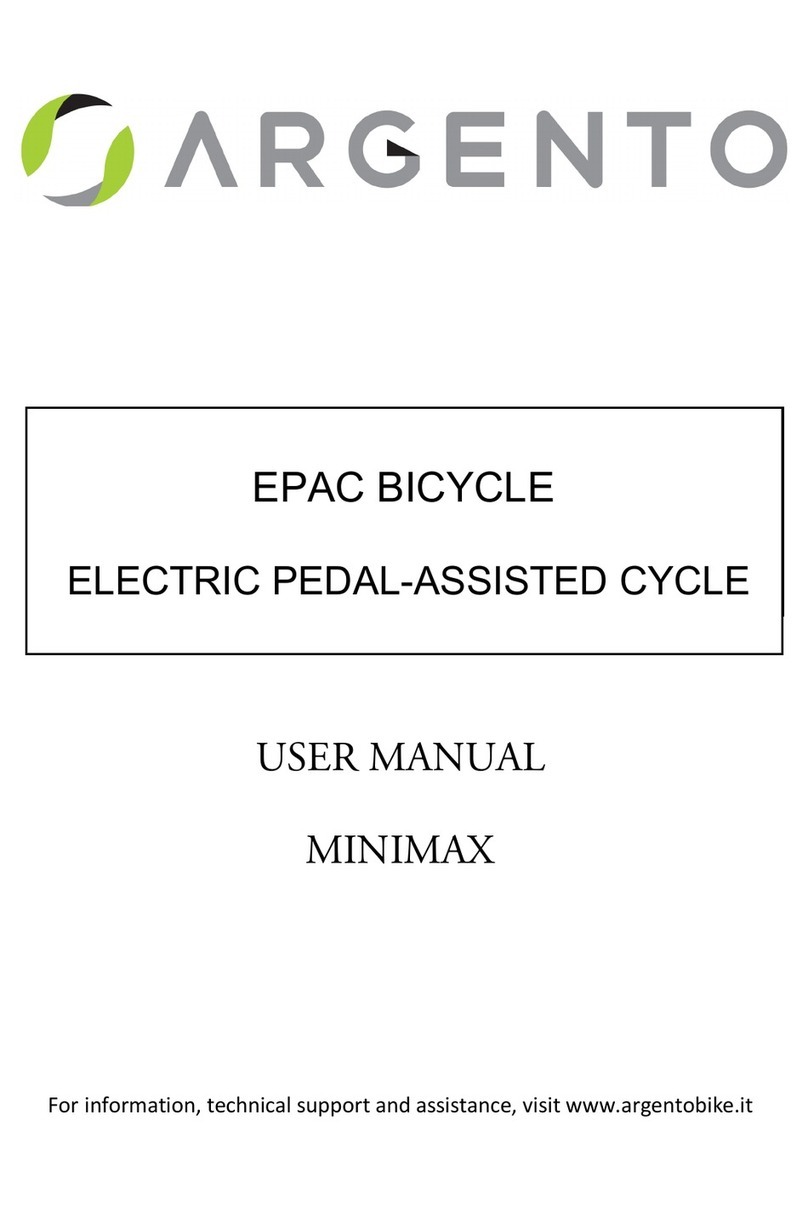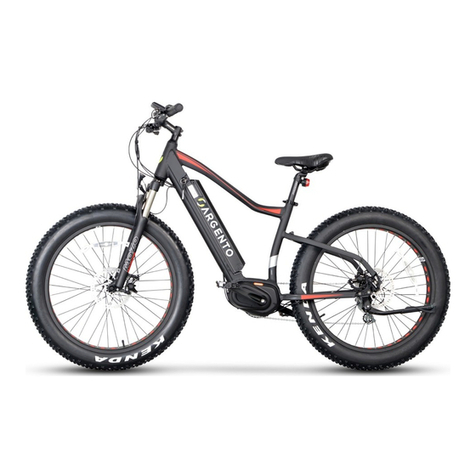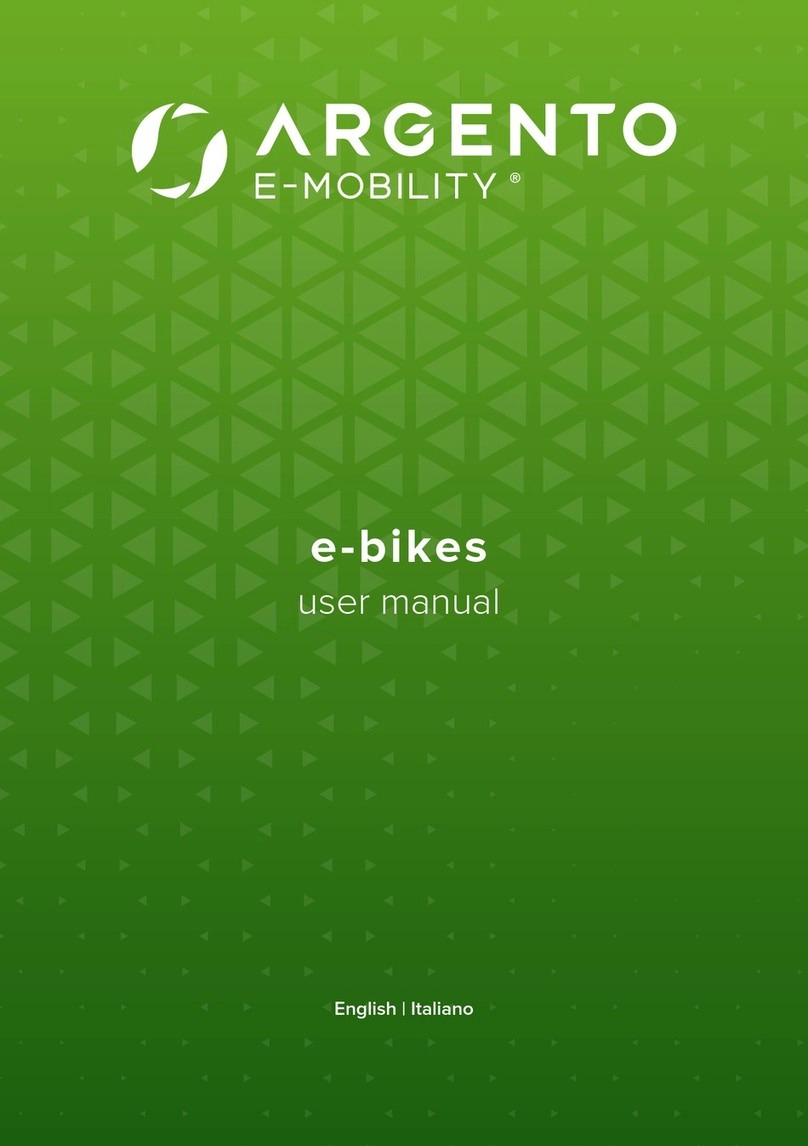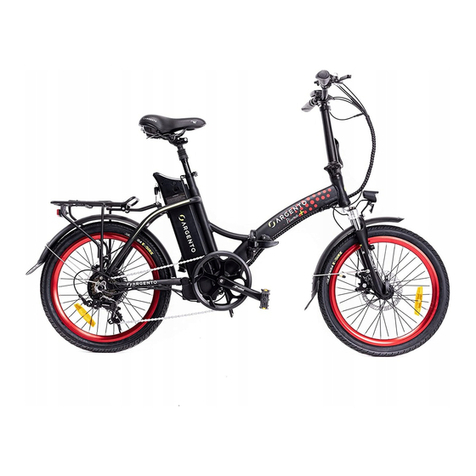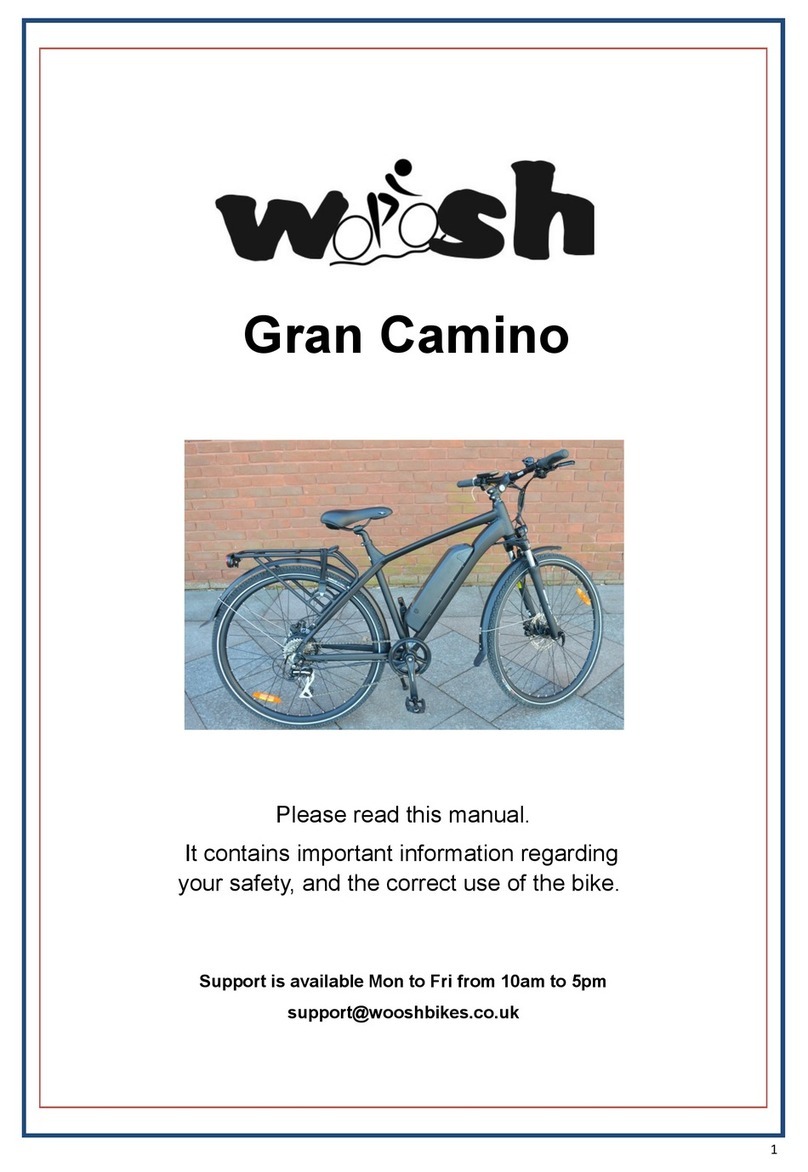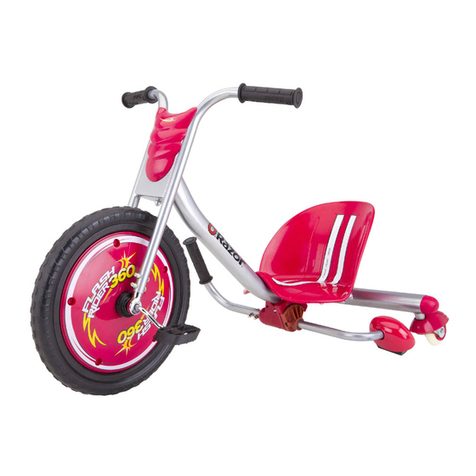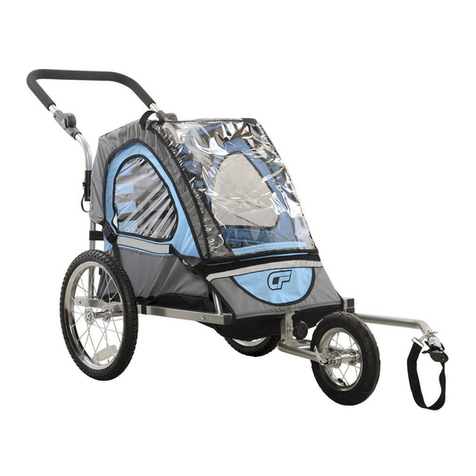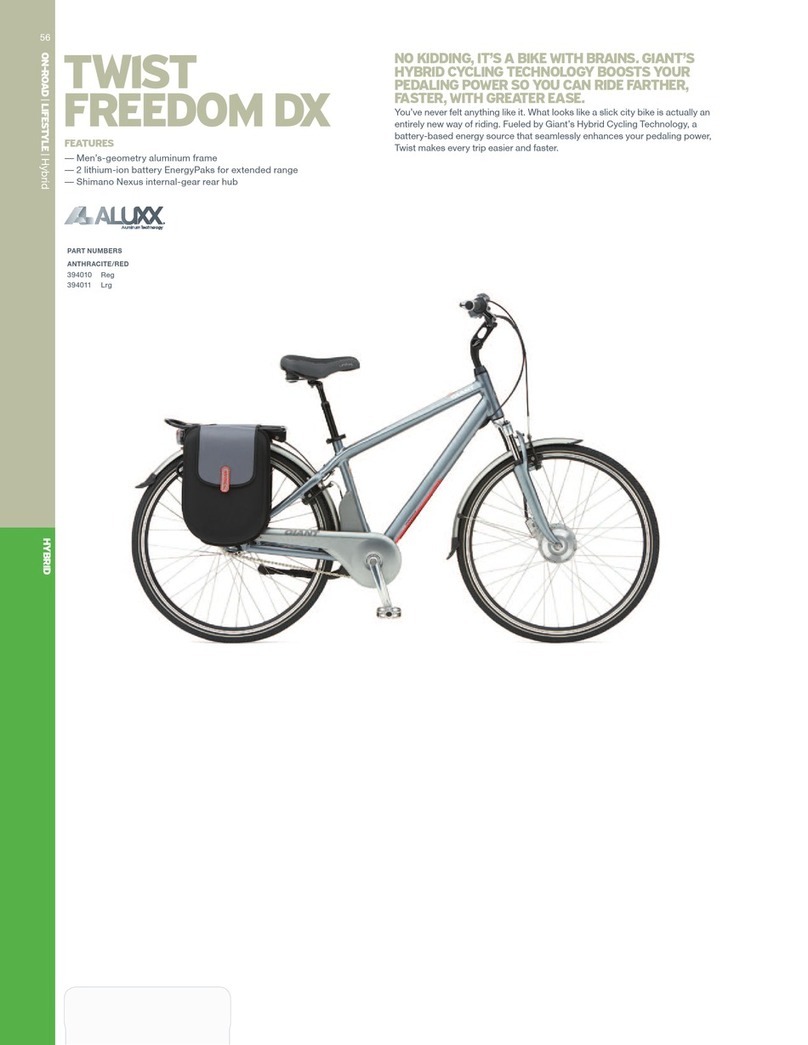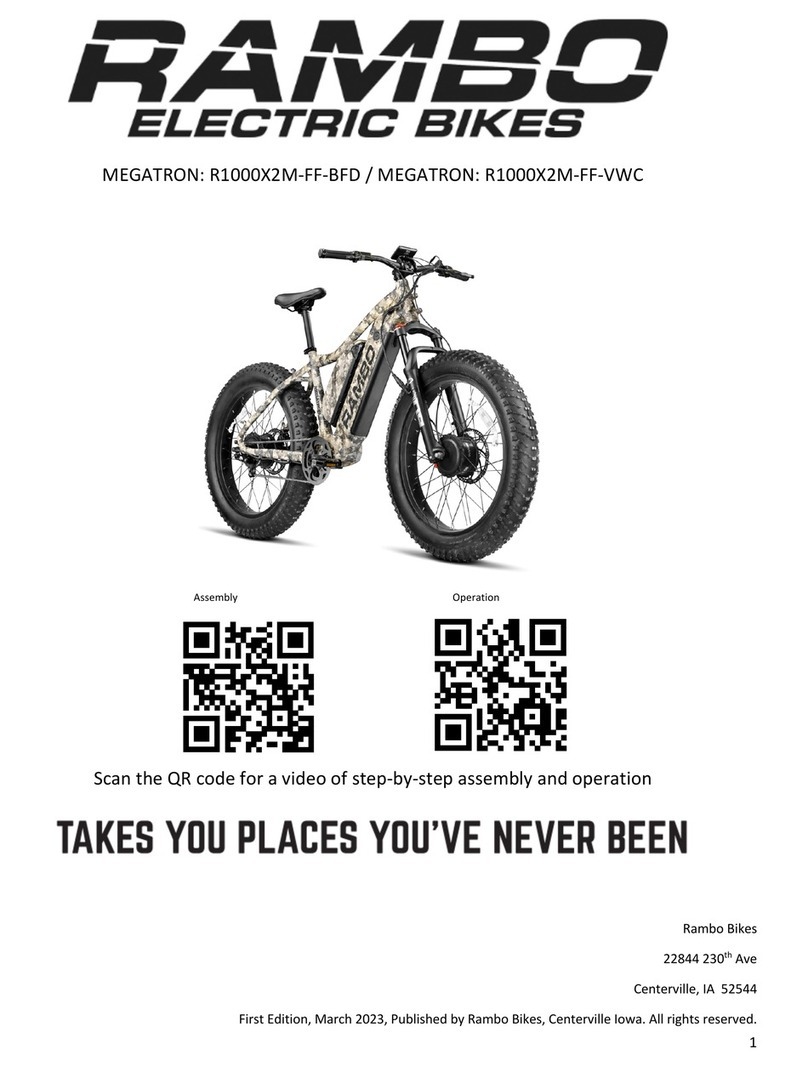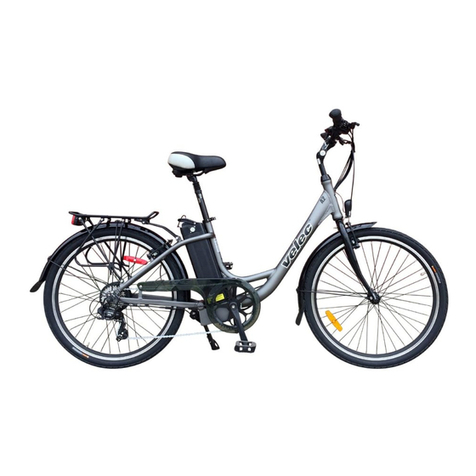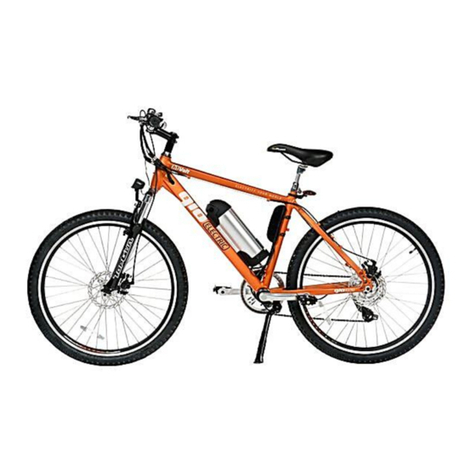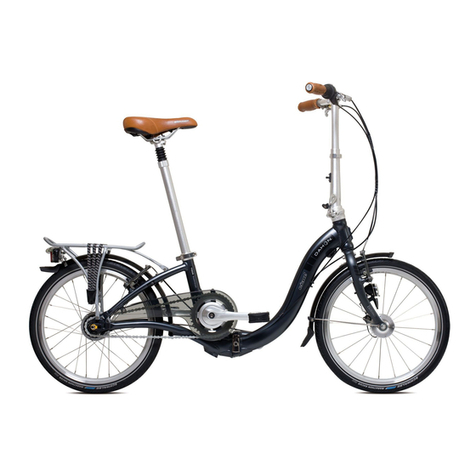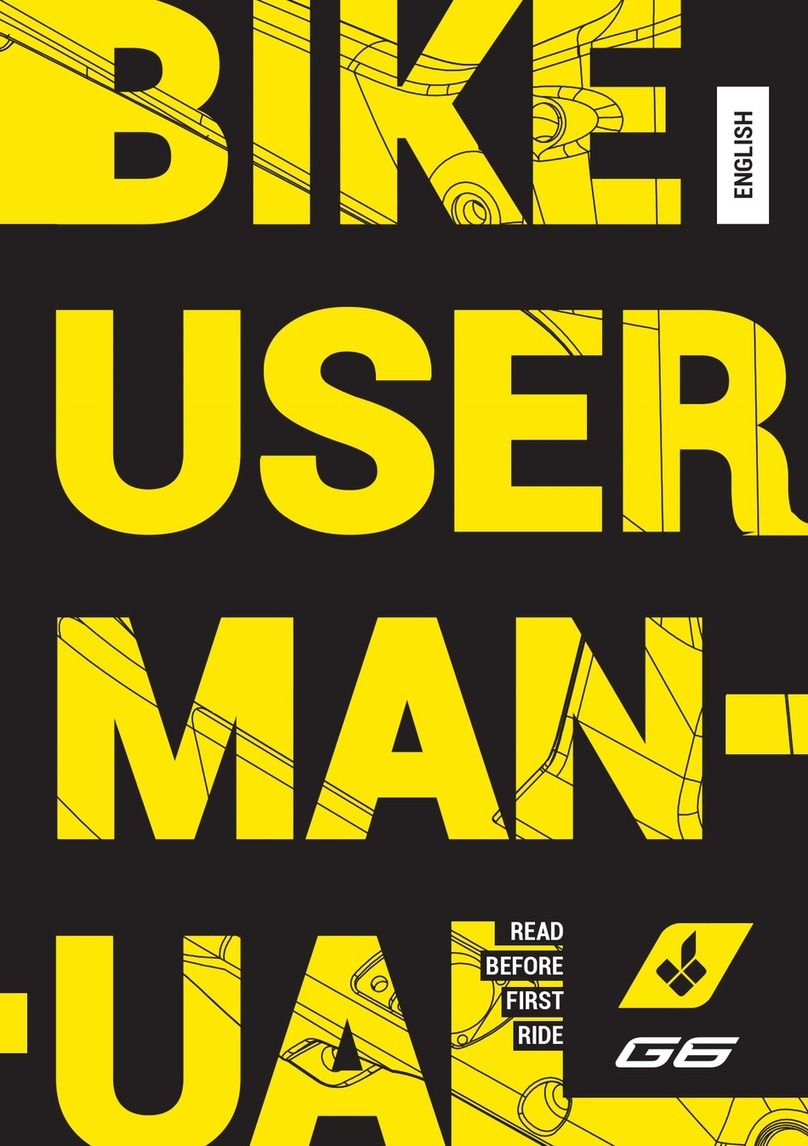
05
The braking distance increases on wet, slippery, muddy or icy roads and the tyre grip decreases significantly with the risk of
the wheels skidding and loss of balance compared to dry roads.
It is, therefore, essential to ride the bike with greater care, maintain a suitable speed and safety distance from other vehicles
or pedestrians.
Take extra care when riding on unfamiliar roads.
For your safety, we recommend wearing suitable protective equipment (helmet, knee and elbow pads) to protect yourself
from any falls or injuries while riding the bike. When allowing others to use the bike, ensure that the rider wears the safety
equipment and explain how to operate the vehicle. To avoid injury, do not allow other persons to use the item if they do not
know how to use it.
Wear shoes before using the item.
The bike has been designed to allow the load of a maximum overall weight (rider and any load being carried) that does not
exceed the value indicated in the product data sheet.
Avoid using the product, under all circumstances, if the total load transported exceeds the recommended weight to avoid the
risk of damaging the integrity of the structural and electronic components of the bike.
The electrically power assisted cycle (EPAC), as specified in the provisions of the current reference standard EN 15194, is a
means of transport intended to transport one person only.
The transport of a passenger is only permitted within the framework of the regulations in force in the country where it is
ridden regarding: the minimum age of the rider, maximum age of the passenger transported, provision of legally approved
and authorised passenger transport devices.
It is the user’s responsibility to ascertain the suitability of the devices used for passenger transport in terms of construction
characteristics, safety systems, anchoring systems and their installation and assembly on the electrically power assisted cycle
based on its structure and within the permitted load limits (maximum load supported by the bike and by the luggage rack
supplied, if present).
The user is also responsible for the provision and installation of devices used for the transport of objects and animals (e.g.
luggage racks, luggage bags, storage baskets, etc.) in compliance with the legally approved and authorised provisions in the
country of use and the limitations of the structure within the permitted load limits (maximum load supported by the bike and
by the luggage rack supplied, if present).
The installation of accessories and equipment on the bike, not only aect the performance of the bike and how it is used, but
can also cause damage if they are unsuitable, thus compromising correct operation and safety conditions during use.
For information on the supply and installation of equipment deemed suitable for the bike, please contact your authorised
dealer or specialised operators.
Warnings for users
• The electrically power assisted cycle can only be used by adults and skilled teenagers.
• Do not take alcohol or drugs before riding the electrically power assisted cycle.
• This electrically power assisted cycle model is designed and built for outdoor use on public roads or cycle tracks.
• Do not attempt to make the electrically power assisted cycle exceed the performance levels for which it was designed;
do not ride on surfaces with a slope greater than 10%, on uneven and rough ground (bumpy road surfaces, with potholes,
depressions, obstacles).
• Never ride the electrically power assisted cycle with any of its parts disassembled.
• Avoid uneven surfaces and obstacles.
• Ride with both hands on the handlebars.
• Before use, replace any worn and/or damaged parts and check that the safety devices are working properly.
• Keep children away from plastic items (including packaging materials) and small parts that may result in suocation.
• Supervise children to make sure they do not play with the product.
• Remove any sharp edges caused by misuse, breakage or damage to the item.
• Pay particular attention when riding the bike near pedestrians and make sure you slow down and signal your presence to
avoid frightening them when arriving from behind.
• Assemble the item correctly.
CAUTION
